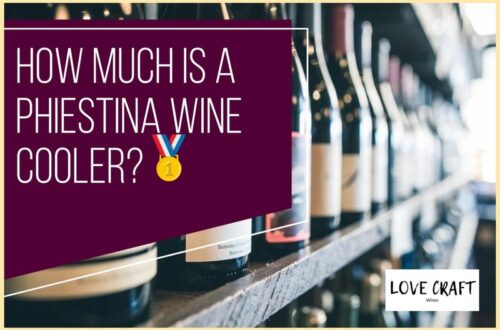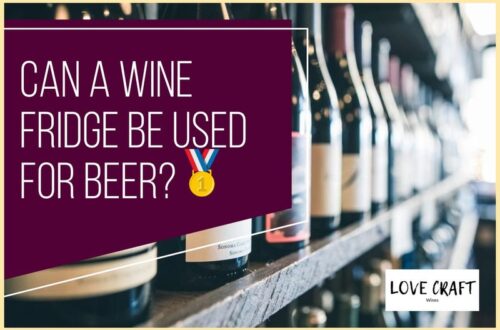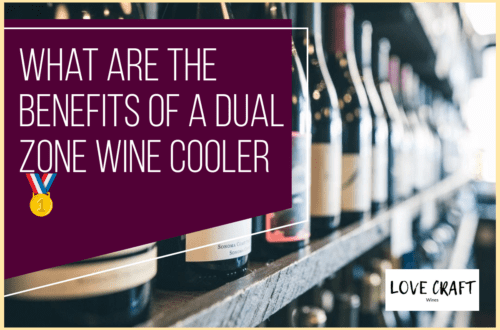In this article we’re going to be talking about how you should store your collection of white wine.
So you’re a wine collector, and you’re looking to keep your white wine bottles in good condition, how exactly do you store them?
In a wine fridge, a wine rack, or even in a wine cellar?
That’s exactly what we’re going to be discussing!
Table of Contents
Why is it important to correctly store wine?
Well firstly, if the bottle has been stored incorrectly for too long then there’s a chance that some of its contents will have oxidized.
This can happen when the cork gets wet from the condensation on the outside of the bottle, which causes oxidation. If the bottle isn’t kept upright but instead sits at an angle, then more oxygen comes into contact with the liquid inside the bottle than would otherwise occur. Dr. Miguel Cabral discusses the myth behind storing wine upright, with him suggesting that is the best way to store your bottles, as opposed to on their side.
The same goes for storing wines in direct sunlight – again, the sun can provide extra exposure to air, causing oxidation, and it can physically change the chemical structure of tannins in the wine, changing the physical appearance and taste.
What are the best ways to store your white wine?
Well, as mentioned above, keeping the bottle upright is key. You don’t want any sort of slant or tilt because this allows excess oxygen access to the wine. Also make sure that the neck of the bottle doesn’t touch anything else, such as another bottle, shelf, or glass door. It may seem like common sense, but I’ve seen people who put their wine down next to other bottles without realizing they were touching each other!
Another thing to consider is temperature control. White wine should ideally be stored between 45-52 degrees Fahrenheit for optimum storage life, and the recommended serving temperature is 48°F.
This will depend on the specific type of white wine, for example medium-bodied white wines such as riesling and sauvignon blanc have an ideal wine storage temperature of around 50°F.
Where light-bodied white wines like pinot grigio have an ideal wine storage temperature of around 52°F.
If the bottle is not kept cool enough it will begin to oxidize which can cause off-flavors and discoloration.
However, if it’s kept too cold, it can begin to taste more bitter and tasteless.
Unlike red wine, where the optimal cooling temperature is warmer, between 55°F – 65°F.
White wines are more delicate than their red counterparts like cabernet sauvignon, so they need to be stored much cooler.
Ideally, you’d buy a wine cooler specifically designed for storing wine.
Should I use a wine fridge to store my white wine?
The short answer is yes!
A wine refrigerator will help protect the quality of your wines by keeping it at an ideal temperature for storage.
The longer answer is that there are many different types of refrigerators on the market today, so which one would best suit your needs? We’ll talk through some of these options below:
Wine Refrigerator Types
There’s no doubt that a wine refrigerator can make storing your whites much easier than simply leaving them out on the countertop or wine rack.
There are several types of wine fridge, including, thermoelectric wine fridges, dual zone wine fridges. All of which we talk about in our article here, on how to choose a wine cooler.
General Tips for Storing White Wine
There are several principles to keep in mind when learning how to store wine in general: keep it cool, keep it dark, keep it still.
There are a lot of things to take into account when storing wine, but here are the most important: Keep it at a cool temperature, Keep it in a dark environment, and prevent it from moving around.
It’s a good idea to aim for around 70% humidity.
It’s best to avoid temperatures under 45 F and over 70 F.
Source: thespruceeats.com
Temperature For Storing White Wines
Wine storage can be a somewhat daunting, complicated, and expensive process.
Different wines require different storage temperatures, so you need a fridge with the right temperature settings.
Every fridge on the market will provide its own temperature capacity, so you can accurately assess whether it suits your needs.
How Long To Store White Wine
Why do some wines last longer than others?
The answer is simple: the storage conditions! The temperature, humidity, and light are all factors that can affect the longevity of your wine.
Additionally, wines are made from a wide variety of different fruits and vegetables, which contain a variety of chemicals.
The chemicals that make up the wines interact with each other to produce reactions that have an effect on the wines’ taste, color, and lifespan.
For example, sulfites are added to wine to help preserve it. These molecules react with other molecules in wine to produce sulfur dioxide which is responsible for the sour/bitter taste that many people find unpleasant.
The sulfites are added as preservatives to prevent the oxidation of the wine.
They also help preserve color by preventing light from breaking down anthocyanins into their component colors.
Finally, although an obvious factor, an opened bottle of wine will not last for as long as an unopened wine, for the reason that the contents have been in contact with oxygen, and so the oxidization process occurs more rapidly.






